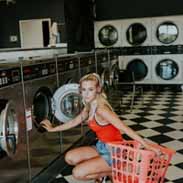Dogs And Cats Flashcards, test questions and answers
Discover flashcards, test exam answers, and assignments to help you learn more about Dogs And Cats and other subjects. Don’t miss the chance to use them for more effective college education. Use our database of questions and answers on Dogs And Cats and get quick solutions for your test.
What is Dogs And Cats?
Dogs and cats are both beloved pets, but they have very different personalities. Dogs are usually very loyal, loving and friendly animals that bond closely with their owners. They can be trained to do a variety of tasks and make excellent companions. Cats, on the other hand, tend to be more independent creatures who like to explore and observe their environment. While they may not be as eager for physical contact as dogs, cats can still form close relationships with people if given enough attention and love.When it comes to diet, dogs require more protein than cats in order to stay healthy. Dog food should always include high-quality sources of animal protein such as chicken or beef while cat food typically contains fish or poultry. Both types of animals need plenty of exercise including walks for dogs and playtime for cats in order to remain active and fit throughout their lives.When it comes time for housetraining either pet, consistency is key. Dogs generally learn quicker than cats when it comes to potty training because they have stronger instincts about where they should go. However, both species will benefit from regular trips outside (or inside a litter box) so that they become comfortable going there whenever necessary. It also helps them build muscle control which leads to better bladder control over time.No matter what kind of pet you choose – whether it’s a dog or a cat – providing them with the proper care is essential for their wellbeing. Feeding them well-rounded meals according to the recommended guidelines along with giving them ample amounts of exercise will help keep your furry friend happy and healthy in the long run.















